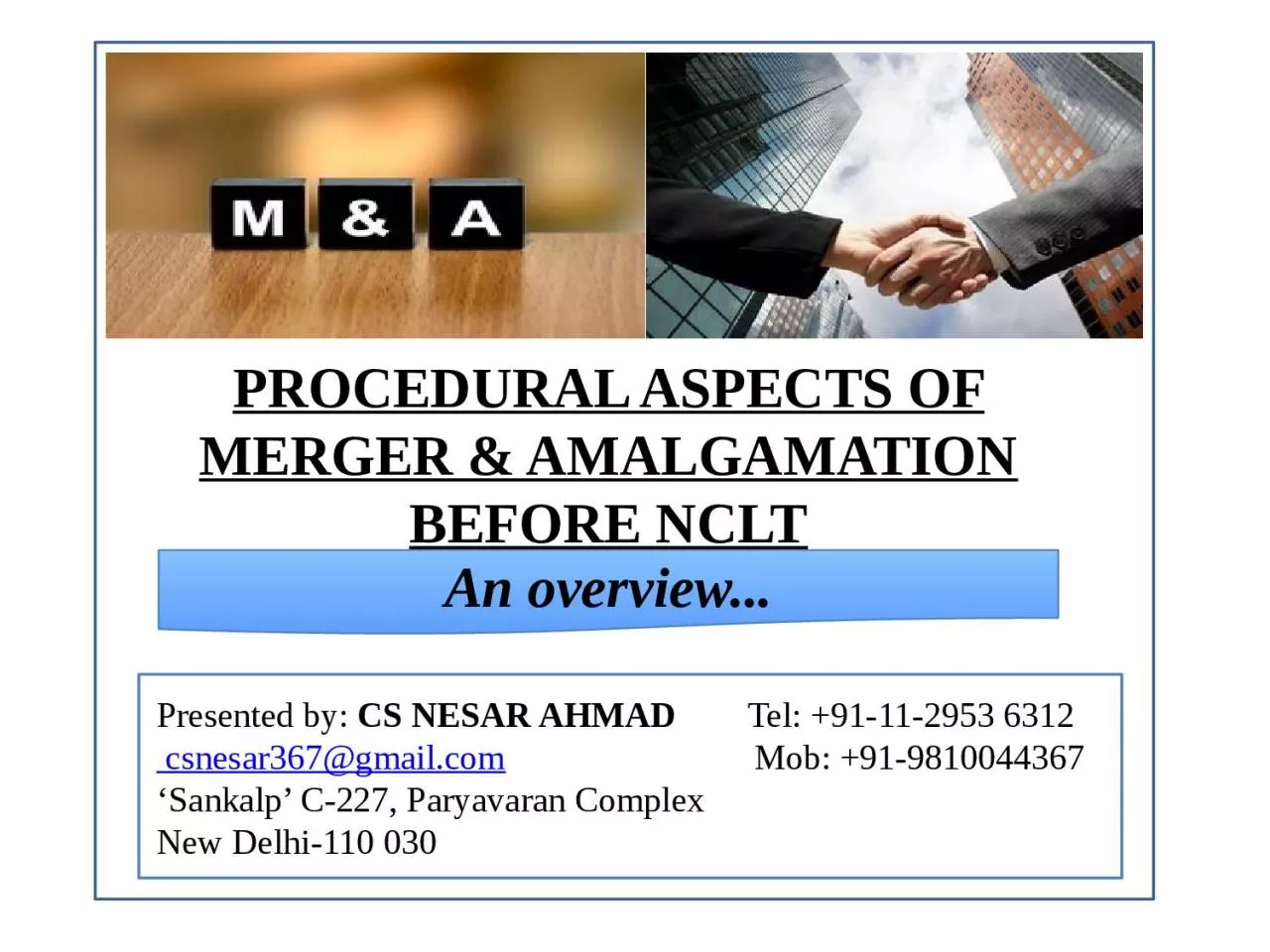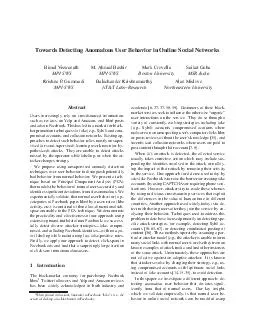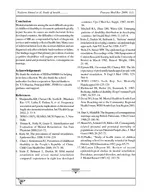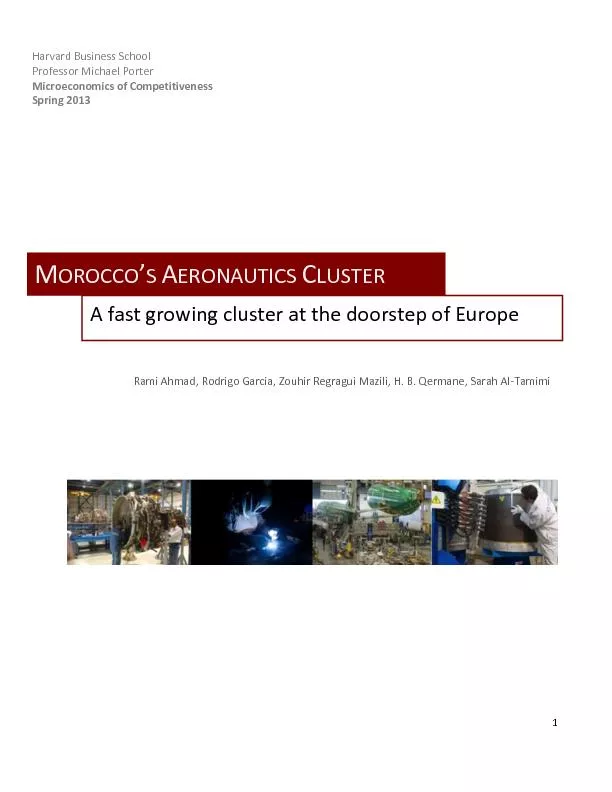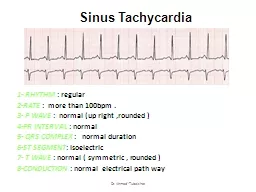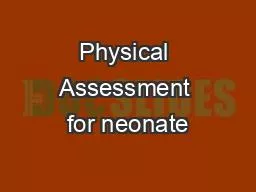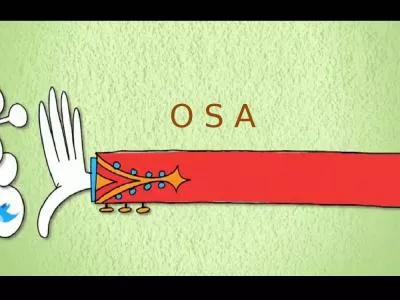PPT-Presented by: CS NESAR AHMAD
Author : ruby | Published Date : 2022-07-13
Tel 91112953 6312 csnesar367gmailcom Mob 919810044367 Sankalp C227 Paryavaran Complex New Delhi110 030 PROCEDURAL ASPECTS OF MERGER amp AMALGAMATION BEFORE NCLT
Presentation Embed Code
Download Presentation
Download Presentation The PPT/PDF document "Presented by: CS NESAR AHMAD" is the property of its rightful owner. Permission is granted to download and print the materials on this website for personal, non-commercial use only, and to display it on your personal computer provided you do not modify the materials and that you retain all copyright notices contained in the materials. By downloading content from our website, you accept the terms of this agreement.
Presented by: CS NESAR AHMAD: Transcript
Download Rules Of Document
"Presented by: CS NESAR AHMAD"The content belongs to its owner. You may download and print it for personal use, without modification, and keep all copyright notices. By downloading, you agree to these terms.
Related Documents

